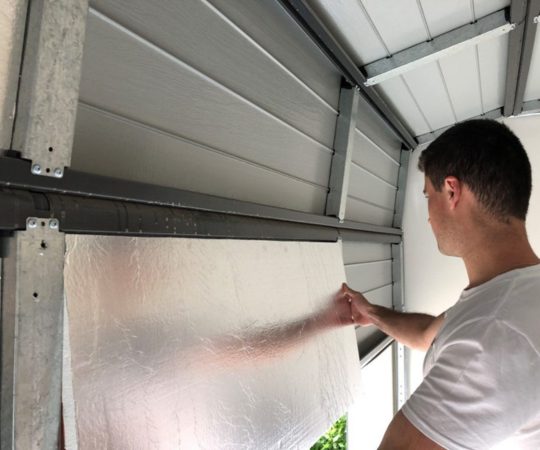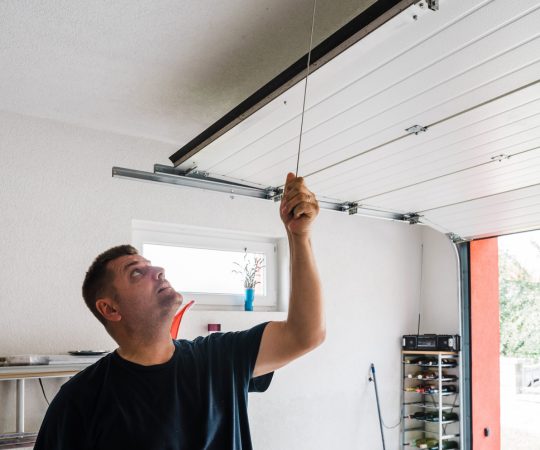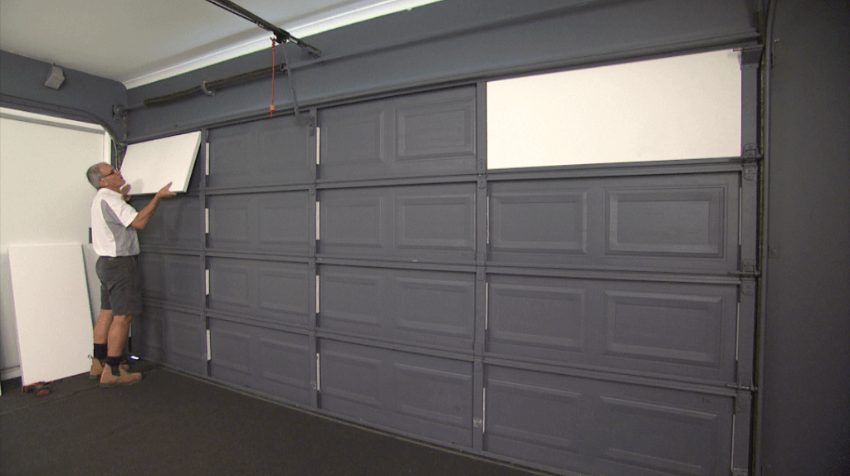Transform Your Garage: The DIY Insulation Kit for Increased Comfort and Savings
You know that feeling when you step into your car in the morning and it’s so cold you can see your breath? Yeah, not exactly the best way to start your day.
But what if we told you there was a simple solution that could keep your garage warm and cozy all winter long? Enter: the DIY Garage Door Insulation Kit.
Not only does insulating your garage door help regulate temperature, but it also reduces noise and can even improve energy efficiency.
And the best part? It’s a cost-saving solution that you can do yourself with just a few tools and some spare time.
So say goodbye to shivering mornings and hello to a more comfortable home environment with this quick and easy project.
Understanding the Benefits of Garage Door Insulation
You’ll love discovering all the perks that come with insulating your garage! Not only will you save on energy costs, but you’ll also experience a significant reduction in noise.
Insulation acts as a barrier between the outdoors and your home, keeping cold air out during the winter and hot air out during the summer. This means that your HVAC system won’t have to work as hard to regulate temperatures, ultimately reducing your energy bills.
Aside from energy savings, insulation also helps reduce noise pollution. If you live by a busy street or have noisy neighbors, then insulating your garage door can significantly reduce unwanted sounds from entering your home.
The added insulation will absorb sound waves before they enter through the garage door, creating a more peaceful living environment. Choosing the right insulation kit is crucial in achieving these benefits and improving overall comfort in your home.
Choosing the Right Insulation Kit
As you peruse the available insulation kit options, consider what your priorities are. Do you want maximum energy efficiency, or is budget your main concern? There are a variety of kits out there, ranging from high-end to budget-friendly picks.
Some kits use reflective material to reflect heat and light away from your garage, while others use polystyrene foam for superior insulation. Take into account the size of your garage door and any unique features it may have when selecting an insulation kit.
Opting for a DIY garage door insulation kit is a great way to save money on energy bills, but only if you choose the right one. Keep in mind that not all kits will work for every type of garage door, so do some research before making a purchase.
Once you’ve selected the perfect kit, it’s time to measure your garage door to ensure that it fits properly.

Measuring Your Garage Door
Measuring your garage door correctly is crucial to ensure that your efforts and investment in energy efficiency pay off with a snug and cozy space, where you can enjoy your hobbies or work without worrying about the cold. To measure your garage door accurately, follow these simple steps:
- Measure the width of the opening at its widest point.
- Measure the height of the opening from the floor to the header.
- Measure the depth of each panel on your garage door.
Garage door measurement is essential because it determines how much insulation material you need to buy. It also affects the final result’s quality since an incorrect measurement may cause gaps or unevenness between panels.
Once you have measured your garage door, you can move onto selecting the right insulation material for your needs.
To prepare your garage door, you must clean it thoroughly before installing any insulation material.
Preparing Your Garage Door
Make sure your garage stays warm and cozy this winter by properly preparing it for insulation installation.
The first step in preparing your garage door is to perform some basic maintenance. Check the tracks, rollers, hinges, and springs for any signs of wear or damage. Lubricate moving parts with a silicone-based lubricant to ensure smooth operation.
Next, inspect the weather stripping around the perimeter of your garage door. If it’s damaged or missing, replace it before installing insulation to prevent drafts from entering the garage. There are different weather stripping techniques available depending on the type of door you have, so be sure to choose the right one.
Once all necessary repairs have been made and weather stripping has been installed, you’re ready to move on to installing the insulation kit.
Installing the Insulation Kit
You’ll be amazed at how easy it is to keep your garage warm this winter with proper installation of the insulation kit. Here’s what you need to do:
- Start by measuring and cutting the insulation panels to fit your garage door. Use a straight edge and utility knife for precise cuts.
- Next, attach the double-sided adhesive tape to the edges of the panels and apply pressure firmly against the door. Make sure there are no gaps or spaces between each panel.
- Finally, secure each panel in place using the provided retainer clips or screws. Use a drill with a Phillips head bit for screws.
Although installing an insulation kit on your garage door may seem like an easy task, potential challenges may arise such as uneven surfaces or improper measurements. To avoid these issues, ensure that you have all necessary tools including a measuring tape, straight edge, utility knife, drill with Phillips head bit, and safety goggles. If you encounter any difficulty during the installation process, consult the manufacturer’s instructions or contact their customer service team for advice.
By following these simple steps for installation of your DIY insulation kit on your garage door, you can enjoy a warmer living space throughout the winter months without breaking the bank. However, it’s important to note that proper maintenance is key to extending its lifespan and efficiency as well as preventing any damage from occurring over time.
Additional Tips for Maintaining Your Insulated Garage Door
Maintaining your newly insulated garage door is key to ensuring it keeps you warm and cozy all winter long, so don’t neglect its upkeep. Regular cleaning of the insulation material can help prevent mold and mildew growth. For best results, use a mixture of mild soap and water to wipe down the surface of the insulation. Avoid using harsh chemicals as they may damage the material.
In addition to cleaning, weatherproofing techniques can also be employed to ensure maximum insulation efficiency. Check for any cracks or gaps in the garage door frame and seal them with weatherstripping or caulk. This will prevent cold air from seeping in and reduce heat loss from your home.
By following these simple tips, you can extend the lifespan of your garage door insulation kit while keeping your garage warm during even the coldest months of winter.

Frequently Asked Questions
How much money can I expect to save on my energy bills by insulating my garage door?
By insulating your garage door, you can expect to see significant savings on your energy bills. The amount of money you save will depend on a few factors, such as the thickness of the insulation.
Generally, thicker insulation will provide better energy savings. However, even if you opt for thinner insulation, you can still expect to see some reduction in your energy costs.
Insulating your garage door is a practical and cost-effective way to improve the overall energy efficiency of your home and reduce your carbon footprint. Plus, it’s a great way to feel like you’re part of a community that cares about making environmentally conscious choices!
Will insulating my garage door help reduce noise from outside or inside the garage?
If you’re looking for effective methods to reduce noise in your garage, there are several soundproofing options available.
From weatherstripping to acoustic insulation, each option has its own benefits and drawbacks.
You can also consider adding mass-loaded vinyl or installing a barrier wall to further reduce noise transmission.
By implementing these solutions, you can create a more peaceful and quiet environment in your garage without having to spend a lot of money on professional soundproofing services.
So if you’re tired of the constant noise from outside or inside your garage, explore these soundproofing options and find the one that works best for you.
Can I install the insulation kit by myself or do I need to hire a professional?
Installing a garage door insulation kit by yourself can be a cost-saving solution, but it requires some DIY skills and necessary tools. The installation process is not complicated, but it’s important to follow the instructions carefully.
You’ll need to measure your garage door panels accurately, cut the insulation material to size, and attach it using adhesive or clips. However, if you’re not confident in your abilities or don’t have the right tools, it may be better to hire a professional installer.
They can ensure that the job is done correctly and efficiently while taking care of any potential issues that arise during the process. Ultimately, whether you choose DIY installation or professional installation depends on your comfort level with DIY projects and budget constraints.
Will adding insulation to my garage door affect the opening and closing of the door?
Imagine standing in your garage on a frigid winter morning, feeling the icy breeze seeping through your garage door. You know that adding insulation to your garage door is essential, but you’re worried about how it might affect the opening and closing of the door.
The truth is that garage door insulation installation can actually improve the operation of your door by reducing stress on the opener and motor. There are several types of insulation materials available, including fiberglass batts, foam board panels, and reflective foil bubble wrap. Each material has its own advantages and disadvantages, so it’s important to do some research before choosing one for your garage door.
Regardless of which type you choose, adding insulation to your garage door will not only make it more energy-efficient but also create a more comfortable space for working or relaxing in your home.
How long can I expect the insulation to last before needing to be replaced?
Insulation durability and replacement frequency are important factors to consider when insulating your garage door. Depending on the type of insulation used, it can last anywhere from 5-20 years before needing to be replaced.
Fiberglass and foam board insulation tend to have longer lifespans, while reflective foil insulation may need to be replaced more frequently due to wear and tear.
Additionally, proper installation and maintenance can also play a role in the longevity of your garage door insulation. Regularly inspecting for any damage or gaps in the insulation can help prevent energy loss and ensure its effectiveness over time.
Conclusion
Congratulations! You’ve successfully insulated your garage door and made a smart investment in your home. By choosing to insulate your garage door, you’ve increased energy efficiency, reduced noise pollution, and improved the overall comfort of your space.
Did you know that, according to the U.S. Department of Energy, an insulated garage door can reduce heat loss by as much as 71%? That’s a significant amount of energy savings for any homeowner.
In addition, insulated garage doors are also excellent at preventing cold air from seeping into your home during winter months. So not only will you save money on heating bills, but you’ll also be more comfortable inside your home.
Remember to regularly maintain your newly insulated garage door by checking for any damage or gaps in the insulation and making necessary repairs. With proper care and maintenance, your DIY garage door insulation kit will continue to provide cost-saving benefits for years to come.
Related Source

